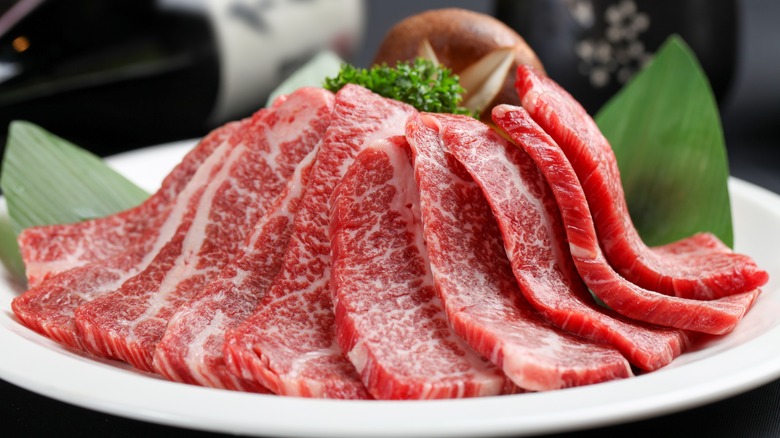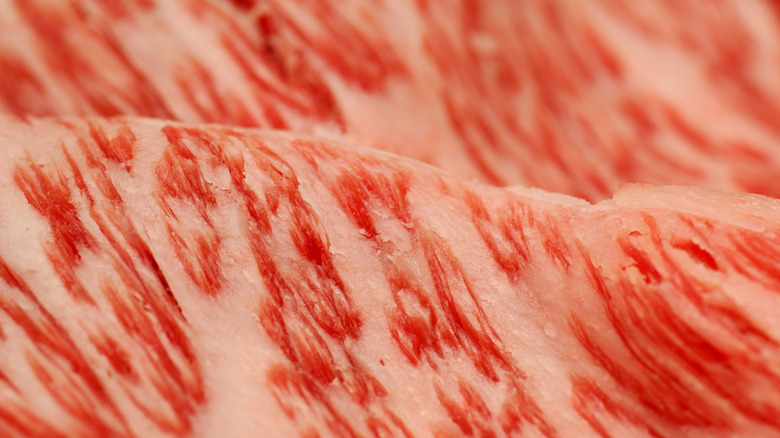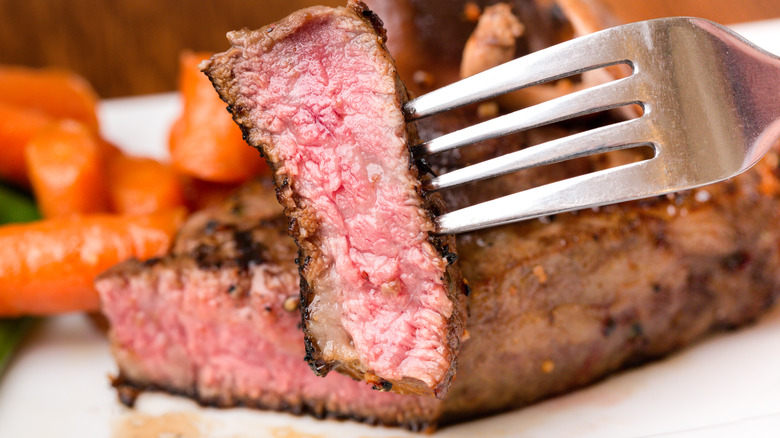When Does Wagyu Beef Become Kobe?
When it comes to indulging in delicacies, something you should know about Wagyu beef is that it ranks alongside caviar and truffles as a luxury that you must try at least once. While a pound of Wagyu can set you back around $250 (just to give you an idea, a pound of USDA Prime sirloin goes for about $12 at Sam's Club), the quality of the meat you get in return is well worth it. Each cut of Wagyu is prized for its extensive marbling, which runs through every inch of the red meat, giving it its signature tenderness and melt-in-your-mouth texture.
But when you're dining out, you might notice an even more compelling meat on some restaurant menus: Kobe beef. While Kobe beef falls under the umbrella of Wagyu, it has to pass even more stringent quality controls and check off a longer list than even your "regular" cut of Wagyu to earn the privilege of being called Kobe beef.
True Kobe beef is even more exclusive than regular Wagyu
You see, the Kobe beef you find on restaurant menus — if it's authentic — is sourced from Japanese Black cattle, one of four breeds belonging to the Wagyu class. But just because it's made from the same cattle doesn't mean all Wagyu can be considered Kobe beef.
So, what makes some Wagyu beef worthy of being considered Kobe? The meat must be made from Tajima-strain Japanese Black cattle that are born, raised, and processed in Hyōgo Prefecture. It must also achieve specific scores for meat quality and marbling, and adhere to strict weight limits set by the Japanese Meat Grading Association.
Due to these exacting standards, only about 5,500 heads of cattle get the "Kobe beef" designation each year, per the Kobe Beef Marketing & Distribution Promotion Association. The majority of these are consumed domestically, where demand is very high. Only a small portion is exported, which explains its exorbitant price overseas ($50 per ounce) and why some of the so-called "Kobe beef" found on U.S. restaurant menus is likely not genuine. Instead, it's typically regular Wagyu, which is still delicious but not quite Kobe-level tasty. This issue has been so long-standing in high-end restaurants that Inside Edition once aired an exposé on it!
Kobe beef is quite a unique tasting experience
It's difficult to describe the taste of Kobe beef. It's something that you have to experience for yourself to understand. However, the lucky few who managed to try a cut have described it as having an exceptionally succulent texture, thanks to the rich marbling that crisscrosses the meat. Kobe cattle are fed a special diet of grasses and grains. They live a pampered life in stress-free environments where they roam freely and even receive daily massages to relax and develop their muscles. These factors contribute significantly to Kobe beef's flavor profile, offering a sweet, slightly nutty taste reminiscent of grass-fed beef.
Given its high price and rarity, you might wonder how to cook and serve Kobe beef. Like any delicacy, Kobe isn't meant to be tossed into any old beef recipe with a heap of spices. The key is to let the steak shine with minimal seasoning in any dish you prepare. So, simplicity reigns supreme here. You can sear the meat until it's rare or medium rare. If it oozes with natural juices and fats when you cut into it, you know you've achieved success.
In any case, while obtaining a true slice of Kobe beef may prove challenging, perhaps that's for the best. After all, its unparalleled taste stems from the rigorous selection process it undergoes. Without this process, Kobe would just be like any other cut of beef — and then it would taste equally as ordinary, wouldn't it?


